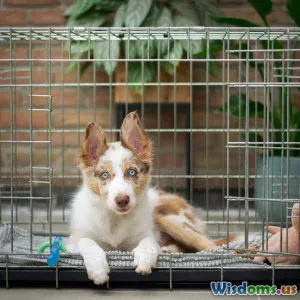
Building Trust with Your Pet
4 min read Discover practical ways to build lasting trust with your pet for a happier, harmonious relationship. (0 Reviews)
Building Trust with Your Pet
Building a bond of trust with your pet can profoundly impact your relationship. Trust forms the foundation for communication, training, and companionship. This article explores effective strategies for developing trust with various types of pets—dogs, cats, birds, and beyond.
Why Trust is Important for Pets
Trust is more than a mere emotional connection; it underpins behavior and compliance. According to a study from the University of Veterinary Medicine Vienna, pets that experience a strong trust bond with their owners show lower levels of stress and anxiety. This bond can lead to better behavioral control, as pets feel safer and more secure in their environments.
Enhanced Safety and Security
Pets that trust their owners are more likely to follow commands, reducing the risks associated with dangerous situations, such as running into traffic or exhibiting aggressive behaviors. A trusting pet is a compliant pet, showing responsiveness when called or directed.
A Better Emotional Connection
When pets feel secure with their owners, they are often more affectionate and bond deeper with them. This emotional connection improves overall interactions and the joy of having a pet. A pet that trusts its owner represents more than just a companionship; it symbolizes love and loyalty.
Key Strategies to Build Trust with Your Pet
1. Improved Communication
Animals communicate differently than humans, and understanding this language is key to establishing trust. This begins with recognizing the body language of your pet. For example, dogs wag their tails when happy and may cower or bare teeth when frightened. Conversely, a cat's purr can signify contentment, while a swishing tail can indicate irritation. Learning these signals can foster respectful interactions, paving the road to trust.
2. Consistent Routine
Establishing a consistent daily routine can help pets feel secure in their environment. Regular feeding times, exercise schedules, and social interactions signal to your pet that they are in a safe space. For a dog, consistent potty breaks and playtime contribute to building predictability and confidence. For cats, having regular play and grooming sessions can fulfill their need for interaction without compromising their independent nature.
3. Positive Reinforcement Training
Training your pet with positive reinforcement is a powerful method to build trust. Rather than punishing undesirable behavior, rewarding desirable actions fosters a positive environment. According to the Association of Professional Dog Trainers, methodologies based on positive reinforcement lead to better learning outcomes without the fear associated with punitive training.
Example of Positive Reinforcement:
For a dog, if they sit on command, reward them with a treat or enthusiastic praise. For a cat, when they use the litter box correctly, offer a small treat. Over time, they’ll grow to associate following your commands with positive outcomes, strengthening trust.
4. Offering a Safe Space
Creating a
Pets & Animals
Rate the Post
User Reviews
Popular Posts





















